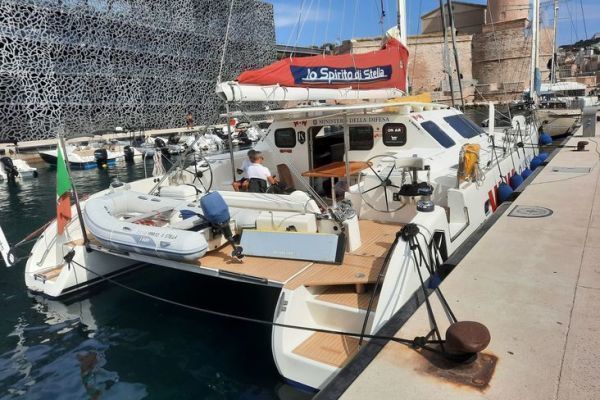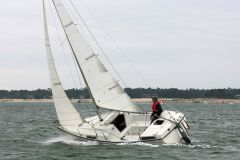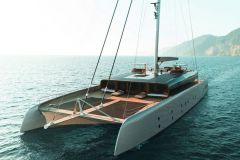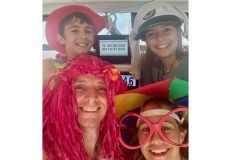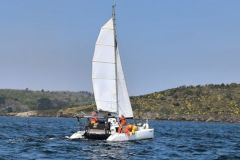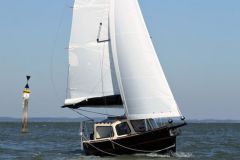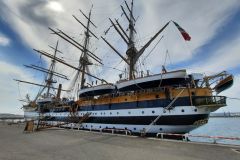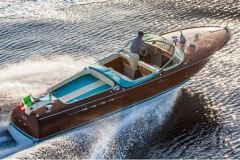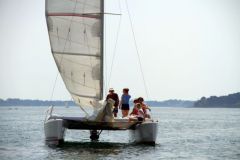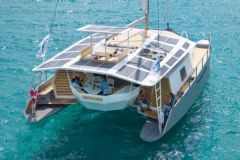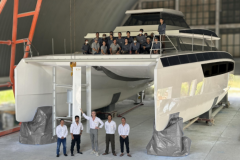An Italian sailor with a tragic destiny
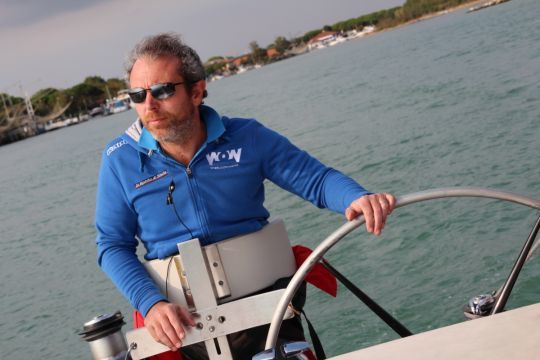
Andrea Stella was born in Sandrigo in 1976 and graduated from the Faculty of Law at the University of Trento in 2000. In August of the same year, during a graduation trip to the United States, he was involved in an unexplained shooting in Fort Lauderdale, Florida, resulting in permanent paraplegia of his lower limbs.
A keen sailor, Andrea Stella nurtures the dream of returning to sailing. With the support of his family, he decided to build a catamaran accessible to all. The results of his work have demonstrated that attention to accessibility in the design of objects and spaces is an added value, beneficial not only to disabled people, but to society as a whole.
In 2003, Andrea Stella founded the non-profit association "Lo Spirito di Stella", which has since embarked on a campaign to promote the removal of architectural barriers and raise awareness of disability.
Succeeding in arousing interest and mobilizing resources, Andrea embarked on the construction of a sailing boat that would enable crew members with reduced mobility to access ocean sailing.
A unique catamaran
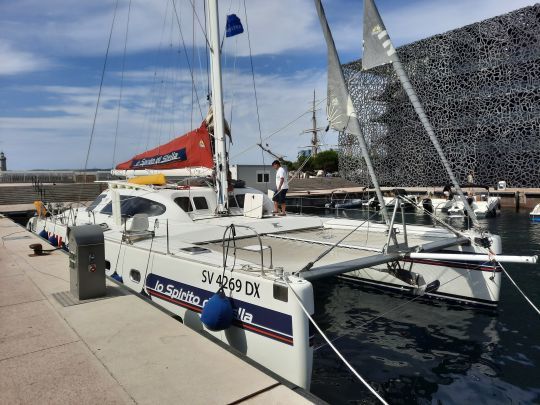
The architectural choice naturally fell on a 50-foot catamaran, as Andrea explains:
"Because of its interior volumes and the absence of a gite, the catamaran was the ideal platform to implement our project. An optimal environment was created to accommodate wheelchair users. In designing the accessible spaces, a worldwide standard width of 68 to 69 cm, corresponding to wheelchair dimensions, was used as a reference to ensure functional circulation from one area to another. As a result, each area has a minimum width of 71 cm.
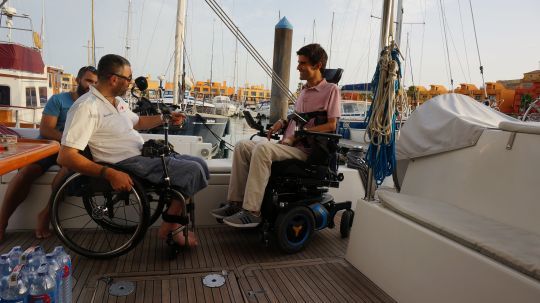
For the positioning of buttons and switches, a height of 70 cm has been chosen to ensure easy access for the disabled. Just as on a conventional catamaran, the saloon is located in the central part, which houses the dining area and the galley on the starboard side, where crew activities take place"
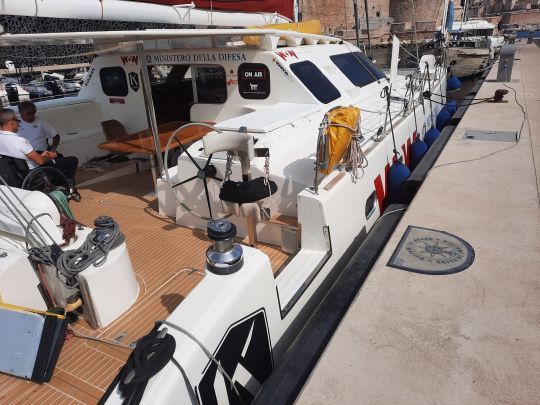
Thanks to its single-level cockpit, access to the boat can be gained either from the aft deck, or from the bulwark if the boat is moored on the longside.
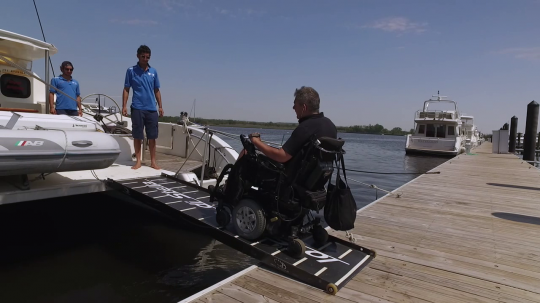
Access to the saloon is via a small ramp with an 8° incline.
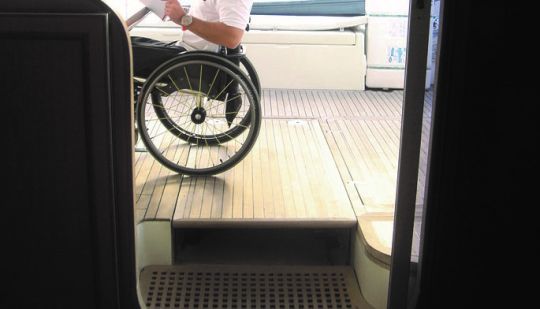
Located in the hulls, 2 of the 4 cabins are wheelchair-accessible, via an electric elevator. The shower rooms allocated to the cabins have been designed to offer simplified access.
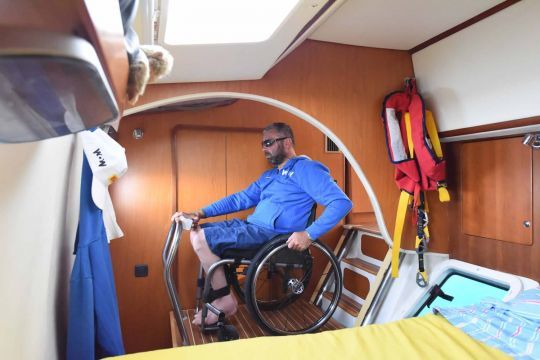
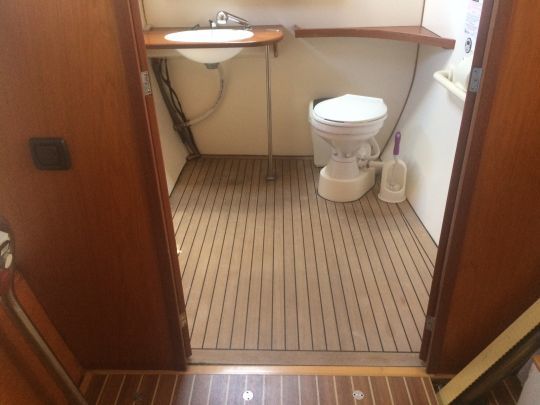
On deck, crew members can move from stern to bow via a sliding seat, allowing them to move forward. All maneuvers are brought back to the cockpit and are easily accessible.
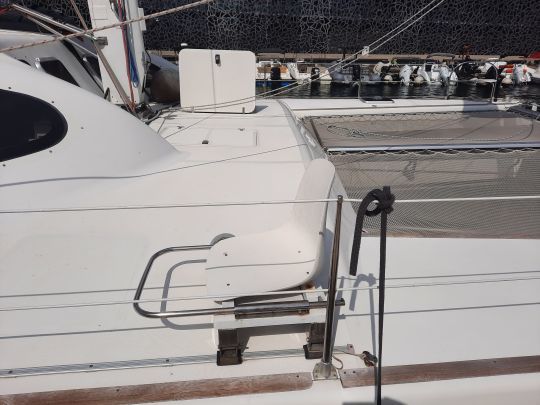
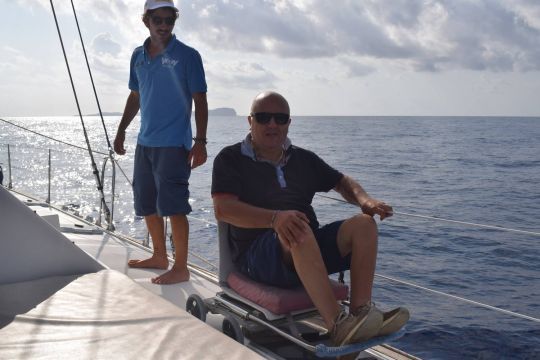
Finally, access to the water is via an elevator fitted with a swimming harness.
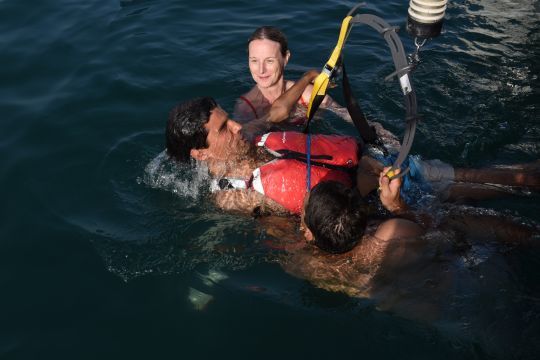
Thousands of miles for dozens of disabled crew members
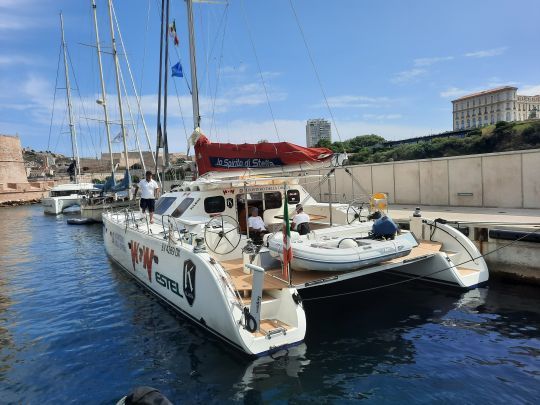
As soon as the catamaran was launched in Genoa, Andrea set course for Miami to return to the place where the whole adventure began. This was followed by his first round-the-world voyage, which lasted 4 years, during which the catamaran went to meet crippled crew members who could no longer sail.
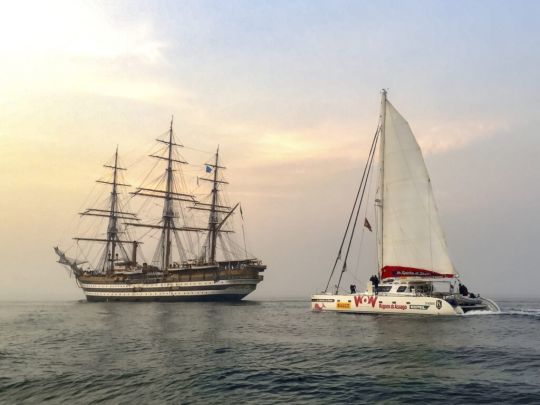
On the strength of this first successful experience, the catamaran has just set off on a new round-the-world voyage. She will sail some legs with the famous three-masted Amerigo Vespucci, a well-known ambassador across the seas of the world. The aim of this second circumnavigation remains the same: to raise public awareness of the cause of disabled people:
"We want to prove that if we can fit out a sailboat for disabled people, then it's possible to do the same for those who stay ashore." .

 /
/ 